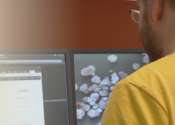Molecular inhibition gets cells on the move
Researchers at Osaka University show how the mutual inhibition of two molecules results in their localization at opposite ends of cells, acting as a trigger for the formation of appendages at one cell end that makes directional ...








